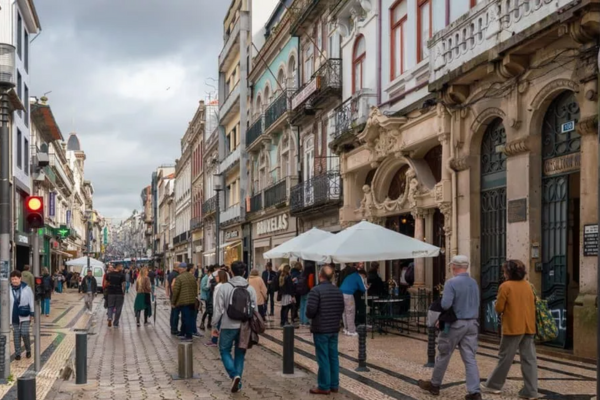The way the Portuguese pay is changing. New technologies are making cash payments increasingly residual, and consumers are following this evolution with increasingly digital and automated buying habits.
Online payments, contactless or proximity transactionsor immediate transfers like the MB WAY are now an integral part of everyday life for consumers and traders alike.
But what are the most widely used payment methods in Portugal today? And what should businesses do to keep up with this change?
The payment methods most used by the Portuguese

In 2024, consumers maintained a clear preference for electronic payment instrumentssuch as cards, credit transfers, immediate transfers e direct debits. Removing the numeral from the equation, these means represented 99.8% of retail transactions carried out.
According to Payment Systems Report 2024 of Bank of PortugalIn 2024, the national retail payment system processed 4.7 billion transactions (+11.2% compared to the previous year), totalling 776.7 billion euros (+4,9%).
As mentioned above, the overwhelming majority of these operations were carried out with payment card, which he represented:
-
89.5% of the total number of transactions with payment instruments (0.6 p.p. more than in 2023)
-
26.9% of total value traded (3 p.p. less than in 2023)
The average amount per card transaction rose slightly to 54.3 eurosThis reflects the habitual use of this means of payment for everyday purchases.
Contactless: consolidates as the main form of card payment
The contactless payments in 2024 have seen significant growth: +24.01TP3Q in number of transactions e +26.9% in value.
The following were carried out 1.4 billion operations with a average value of 25.4 euros per transaction. This method represented 56.7% of card purchasesand is particularly prevalent in retail and catering.
Immediate transfers (such as MB WAY) grow at a fast pace, but retain residual weight
The use of electronic payment increased 11.2% in number of transactions e 6.6% in value.
This growth was led by immediate transfers (including MB WAY), which recorded an increase of 46.4% in quantity e 47.2% in value, which, according to the Bank of Portugal:
"(...) it's the result of consumers' growing preference for fast, convenient and secure payments, but also of the impetus given by European regulations (the Regulation on immediate credit transfers in euros) and national initiatives (such as the beneficiary confirmation service and SPIN)."
Despite the strong pace of expansion, these operations accounted for only 0.41 T3T of the total number of transactions and 3.61 T3T of the value processed. The majority of immediate transfers (59.2%) were initiated by private individuals.
Online shopping: cards continue to lead and gain weight in total transactions
In 2024, the online purchases with national cards grew 37.2% in number e 38.3% in value.
This type of transaction has come to represent 18.0% of total card transactions e 21.6% of the aggregate amount, an increase of 2.3 p.p. and 3.6 p.p. compared to the previous year.
A most of these purchases were made from merchants outside Portugalrepresenting 55.7% of the number of operations and 59.0% of the total value.
The most widely used means of payment in Portugal are:
According to the latest data, these are the most widely used means of payment in Portugal:
-
Debit/credit cardsboth in physical shops and online
-
Contactless technologywith continuous growth
-
Immediate transferssuch as MB WAY
Automatic Payment Terminals (APTs) continue to grow in Portugal
By 2024, the outlook for Automatic Payment Terminals (TPA) continued to grow in Portugal: the number of terminals grew by 5.2%, reaching around 521.7 thousand units, equivalent to an average of 49 TPA per thousand inhabitants.
Of these, 93 % were qualified to contactless payments, in line with the 6.9 % increase in the number of contactless cards in the same year.
This remarkable growth demonstrates the strong commitment to technology and convenience in card payments in a physical environment.
How can you offer your customers a better payment experience?
Faced with these trends, the question must be asked: how can businesses offer their customers a payment experience that matches their habits?
To answer this question, let's divide payment methods into three channels: at physical shopat online shop and distance.
Payments in Physical Stores
Starting with the physical purchasing channel, the report noted that on 31 December 2024, Retail was the sector of activity where the penetration rate of the contactless technology was the highest, corresponding to 63.21 BTP3T in number and 64.41 BTP3T in value of card purchases. In second place was Restaurants, with a weight of 21.81 B3T in number and 17.31 B3T in value.
By combining card payments with contactless, it's easy to see that the solution involves TPA offer that accept this type of payment.
This is the case, for example, with payment terminals Smart e Easyand the App Soft.
Smart Terminal
The former, on the other hand, sees itself as a TPA Android which will allow customers to pay for their purchases with a bank card by Contactless, PIN, MB WAY, Google Pay e Apple Pay and also makes it possible to installation of management and invoicing apps that make life easier for the retailer, such as:
- Instalment plan with UNICRE (which allows customers to pay in instalments for purchases directly at the POS (or online), in between 2 and 6 interest-free instalments)
- Global Blue - Tax Free
- ZS Mobile
- WinRest
It should also be noted that through this REDUNIQ solution, you can receive PIX payments, one of the most widely used methods in Brazil, is now available in Portugal.
Easy Terminal
The second, a payment terminal with a monthly fee according to your business turnover, will allow you to accept credit and debit card payments (Visa and Mastercard brands) via PIN, Contactless e MB WAY. It is also a payment solution with no minimum income, commissions, loyalty period or annuity.
App Soft
Finally, the Soft app, which once installed on the trader's smartphone or tablet, turns it into a real Android POS able to accept Contactless payments, NFC e QR Code.
Online Shop Payments
As for online paymentsIf you sell through an online shop, the solution may be to use the E-Commerce payment gateway which, in addition to providing simple and fast integration with the shop, is characterised by the fact that it does not no membership or monthly fee and allows customers to make online payments with debit and credit cards (Visa and Mastercard) from all over the world.
Remote Payments
Whether you sell through online channels - such as social networks, email or marketplaces - or in face-to-face contexts, such as trade fairs, home deliveries or catalogue sales, the solution Pay by Link allows you to receive payments simply, quickly and securely.
By issuing a payment link With a personalised payment system, you can accept remote payments by Visa or Mastercard, ATM reference or MB WAY, sent by email, SMS or WhatsApp. It's the ideal option for businesses that don't have an online shop or that want to speed up payments in contexts outside the traditional point of sale.


